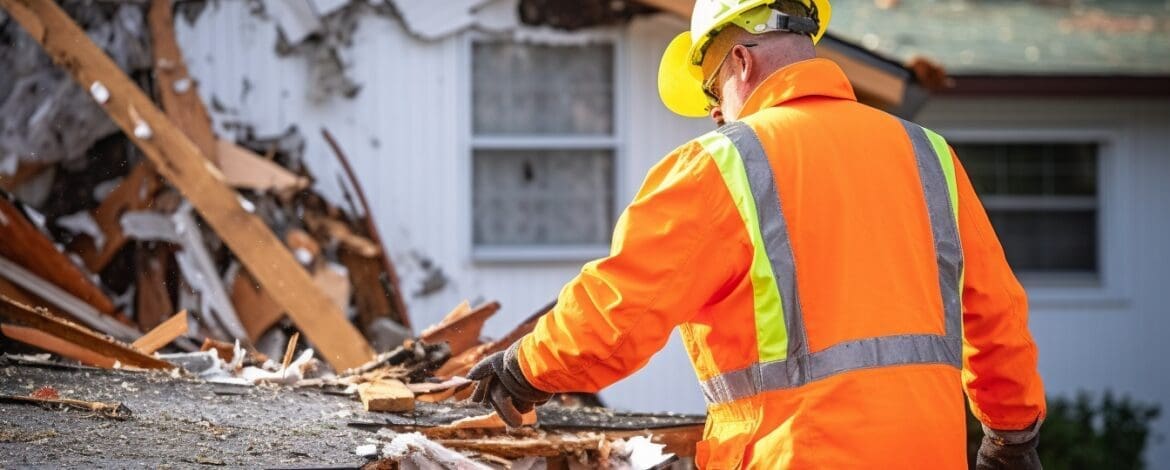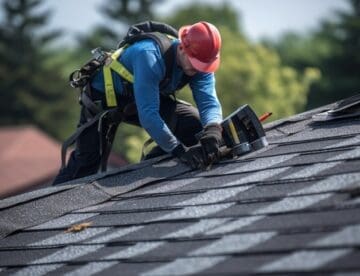Homeowners in Florida get a tough deal when insuring their homes. Factors like hurricanes, torrential rain, constant sunshine, and climate change mean roofs in Florida endure constant battering. But now, the impact of higher inflation rates on homeowners insurance means that premiums will rise even more in the Sunshine State.
Rising construction costs and labor costs have a knock-on effect on the cost of homeowners insurance premiums. Also, scientists say the effects of climate change mean severe weather events will occur more frequently in southeastern states. Therefore, homeowners in Florida need to stay informed about how inflation can impact their insurance coverage.
This article examines how the effects of inflation can impact homeowners insurance policies in Florida. You will also get valuable insights to help you make informed decisions about your coverage.
Historical Context
Florida is no stranger to hurricanes. However, in recent years the Sunshine State has experienced the wrath of several powerful hurricanes, with devastating financial consequences. Here is a brief snapshot of how hurricanes have impacted Florida residents.
- Hurricane Irma: This severe hurricane struck in 2017, causing an estimated $200 billion in damages. Property owners made over 1.13 million claims, totaling $20.7 billion. This makes it one of the costliest storms in Florida’s history.
- Hurricane Michael: In 2018, Hurricane Michael wreaked havoc on the state with winds up to 155 mph. Reports indicate it was the most intense hurricane to make landfall along Florida’s Panhandle. The average insurance payout per claim was $57,441.
- Hurricane Ian: In 2022, Hurricane Ian destroyed around 5,000 homes and damaged 30,000 more in Florida. The New York Times reported that insurance losses were expected to reach $67 billion. The article reported that the devastating impact of severe storms could “destabilize Florida’s insurance and real estate markets.”
Since Hurricane Andrew in 1992, it is estimated that 16 insurance companies have become insolvent. Some reports indicate that in 2022, five companies went insolvent, and many more insurance agencies had their ratings downgraded.
Related Reading: Everything you need to know about roofing and homeowners insurance.
Key Factors Driving Up Insurance Costs in Florida
Florida’s average homeowners’ insurance rate is three to four times the national average. This means the average annual cost to insure a home is $4,231. Several key factors combine to drive up these insurance costs.
- Impact of Climate Change: Florida is particularly susceptible to the effects of climate change. These include rising sea levels, increased storm intensity, and higher average temperatures. These climatic factors increase the risk of property damage and insurance claims, leading to higher insurance premiums.
- Impacts of Inflation: With inflation levels hitting all-time highs, the cost of construction materials and labor pushes up insurance premiums and impacts coverage limits. These increases mean that repair costs soar after a major weather event.
- Local Development Trends: Florida has experienced significant development and urbanization. This has resulted in more homes being built in vulnerable areas like coastal regions. Therefore, more homes are at risk of damage from flooding, storms, and high winds.
- Population Movement: Florida is the fastest-growing state in terms of population growth, with 76 percent of Floridians deciding to live near the coast. And more people mean more homes, leading to more insurance claims after a hurricane, thus driving up insurance costs.
A combination of factors such as climate change, labor shortage, supply chain issues, the rising cost of building materials, high-interest rates, and population movement makes the cost of insurance in Florida one of the highest in the country.
The Tangible Impact of Inflation on Homeowners
What has been the effect of hikes in premiums on average homeowners insurance costs? According to CNN, many insurance companies in Florida face insolvency due to high payouts. Therefore, they increase the average premium rates they charge Floridians. The result is that residents of the Sunshine State pay as much as four times more than homeowners in northern states.
Some homeowners are paying up to $6,000 per year, compared to the national average of $1,700. However, the availability of homeowners insurance also makes it difficult to insure a home.
For example, one St Petersburg homeowner found that from 2018 to 2020, her insurance premiums doubled from $3,000 to $6,000. Then in 2023, they were told it could jump to $13,000. So, they were forced to switch insurers and found insurance for $4,500.
Additional Complications
Reinsurance is another reason homeowners in Florida face huge price hikes to get adequate coverage. Think of reinsurance as insurance for insurance carriers. This concept has become popular in the insurance industry to minimize the financial risk insurance carriers face from huge payouts. However, the increased costs to insurers inevitably trickle down to homeowners policies.
Ways Florida Homeowners Can Adapt and Save
Homeowners insurance gives peace of mind to protect you from catastrophic financial loss after a natural disaster. However, many homeowners struggle to find thousands of dollars to cover the rise in insurance rates. What can you do to get adequate insurance coverage for a reasonable cost?
Here are a few tips to help adapt and save on annual insurance premiums:
- Shop Around: The insurance marketplace is highly competitive. Therefore, compare prices from different insurers to find the best rates. Some insurer carriers offer discounts to specific groups of people, such as veterans or seniors.
- Increase Your Deductible: Paying more from your pocket for repair costs can lower your annual premiums.
- Upgrade Your Roof: Consult a local roofing contractor to explore weatherproofing upgrades. Some insurance companies offer lower premiums if weatherproofing upgrades are installed. They also reduce the risk of damage, meaning you must make fewer insurance claims.
- Bundle Coverage: Reach out to your existing insurer to see if they will combine multiple policies — auto insurance, health insurance, and homeowners insurance — with your existing insurer for a multi-policy discount.
It’s also vital to be proactive and voice concerns to local representatives about unscrupulous insurance companies or the general health of the insurance marketplace in Florida.
Understanding the Inflation’s Impact in Florida: A Takeaway
The rising cost of insurance premiums in Florida is a trend that is likely to continue. Rising population growth, climate change, labor shortage, supply chain issues, high-interest rates, and reinsurance contribute to the financial hardship Floridians face in securing adequate coverage.
Despite skyrocketing insurance costs, maintaining adequate coverage is vital to give you peace of mind if a natural disaster occurs. Therefore, along with looking for the most competitive premiums, take positive steps to weatherproof your home as an investment for the future. If you’re a Florida homeowner looking to weatherproof your roof and save on insurance premiums, call Code Engineered Systems today. Our experienced team of professionals will assist you with finding the best solutions for your specific home and budget needs.




